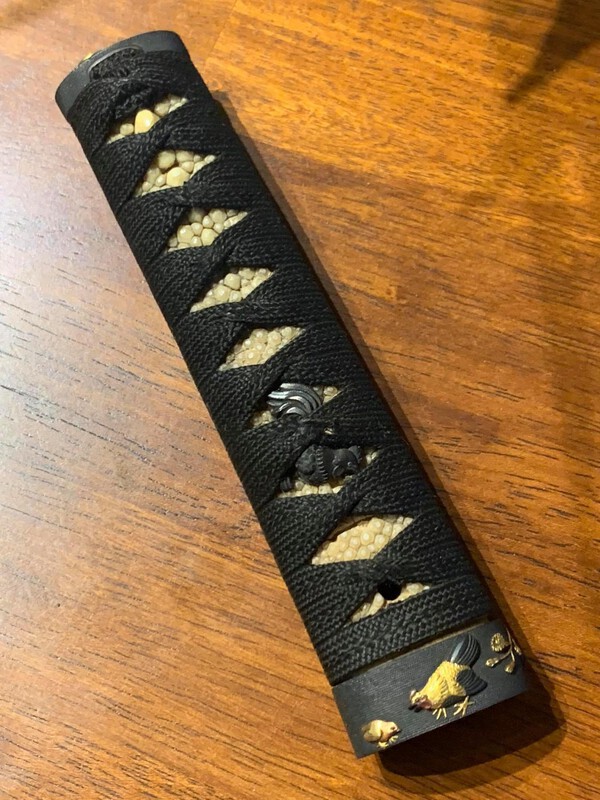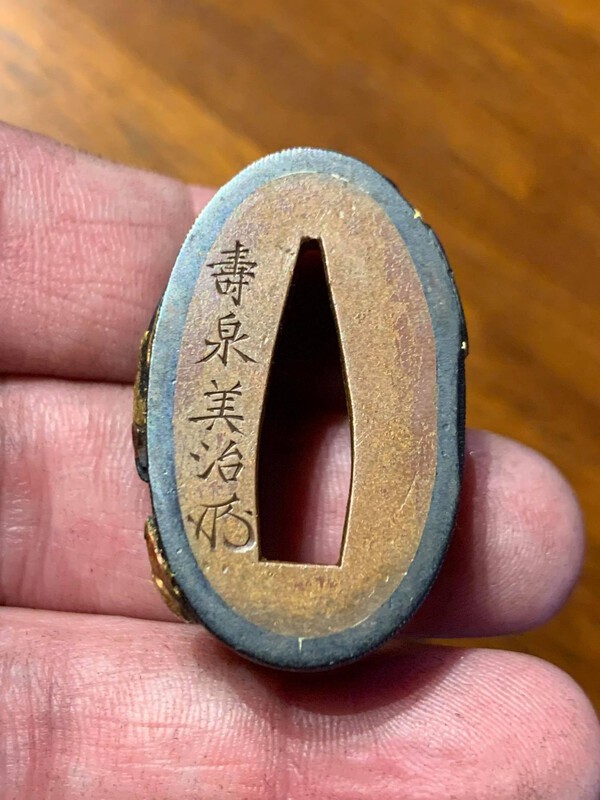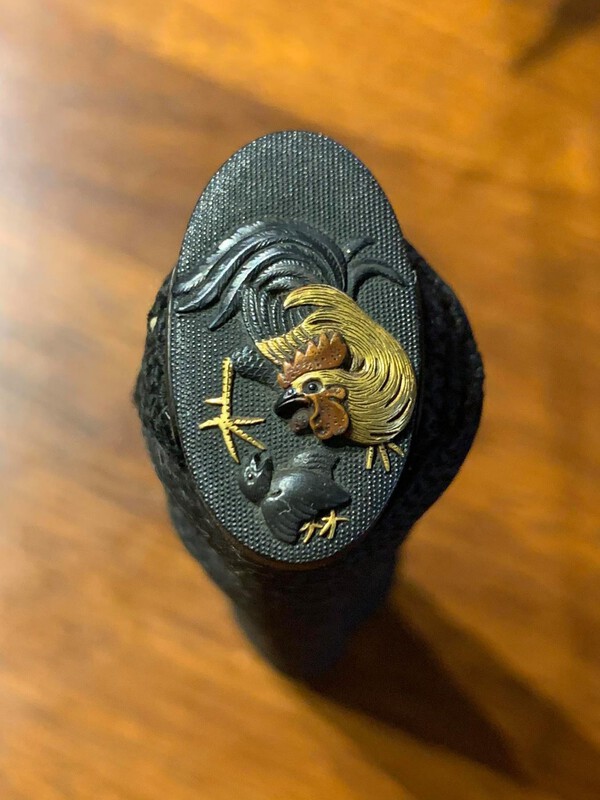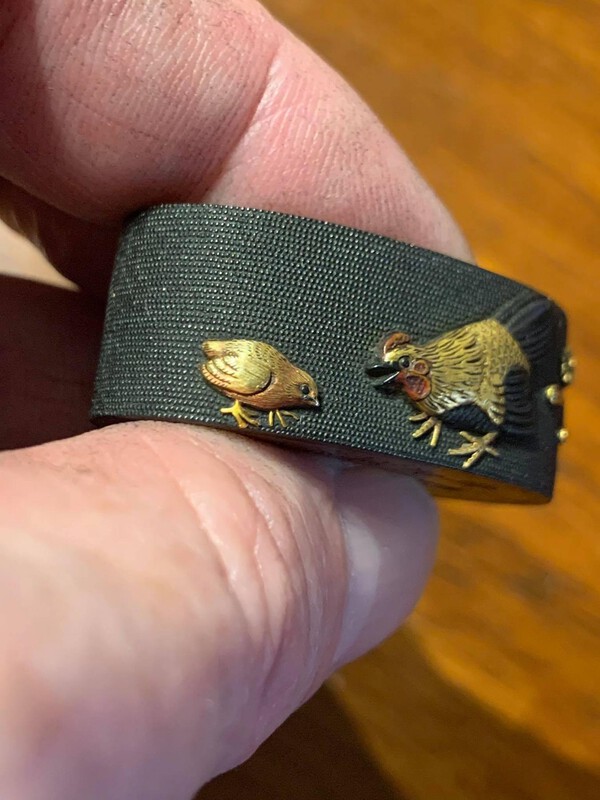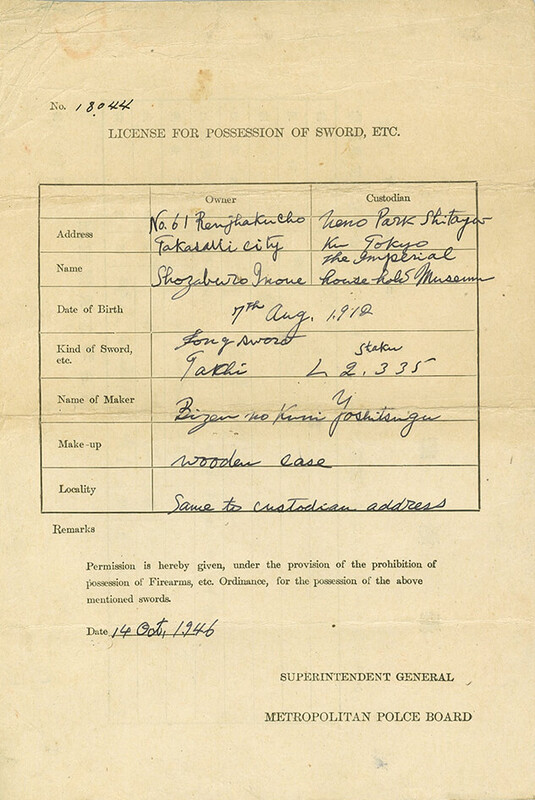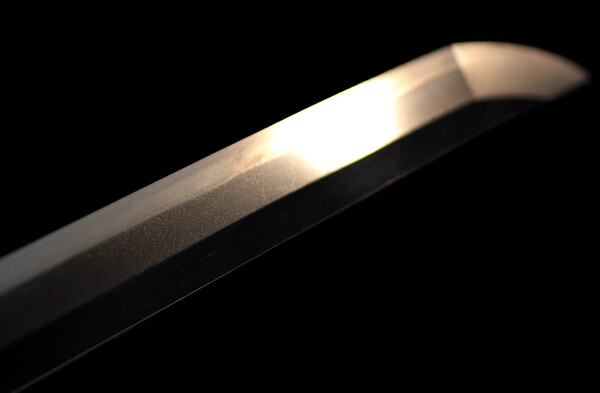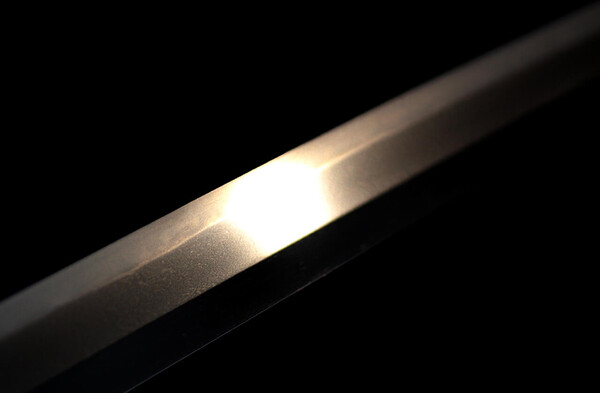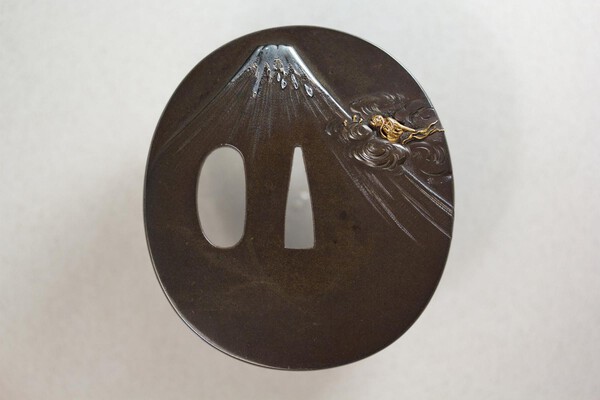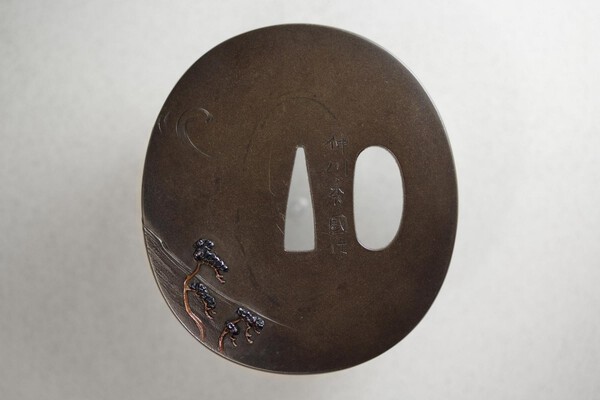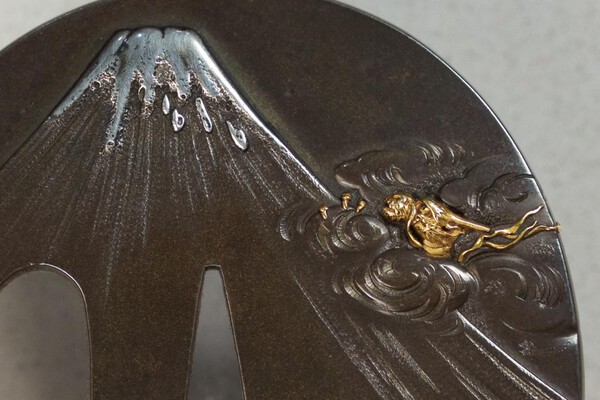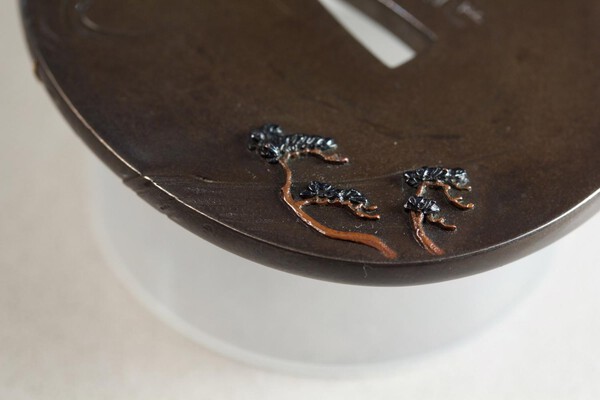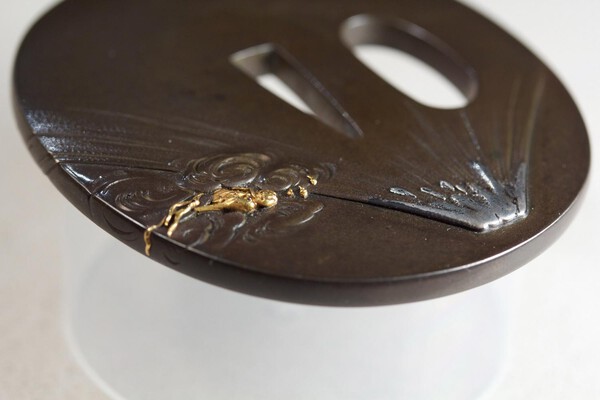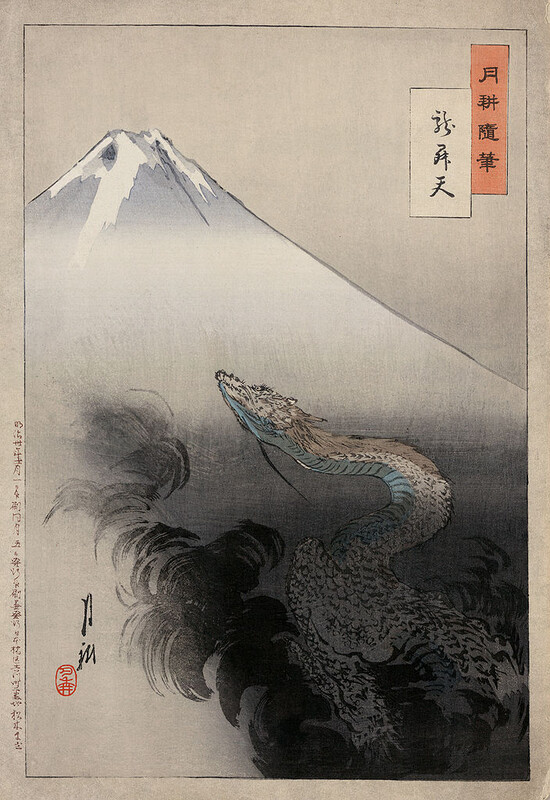-
Posts
752 -
Joined
-
Last visited
-
Days Won
6
Content Type
Profiles
Forums
Events
Store
Downloads
Gallery
Everything posted by Gabriel L
-

Darcy Brockbank
Gabriel L replied to Ted Tenold's topic in Sword Shows, Events, Community News and Legislation Issues
Shocking and deeply saddening. What a tremendous loss for the community, to say nothing of his friends and family. -
Wasn't sure whether to post this in the Izakaya or not. This YouTuber previously posted an antique katana they had purchased and announced his intention to practice polishing on it. ☹️ Apparently enough people spoke out negatively in the comments that he took down that video, but you can see in this new one that he not only purchased an even more expensive antique, but also a ~$500 Namikawa polishing kit, so... still seems like he is intent on practicing togi without traditional training. 😞 Hopefully he won't be doing so on anything valuable. This post isn't strictly about that, however. He also announces that he might auction this blade off with no reserve - so maybe someone here will be able to rescue it from whatever followers he has? Unfortunately it seems that whatever details about the auction may exist are locked behind a Patreon paywall at https://www.patreon.com/burrfection (there is an Oct. 15 post titled "Katana Auction - anyone?"). I don't want to pay this channel just to find out if he is indeed auctioning the blade, so that's about as much as I can say.
-
@Mark and others – I helped Terran translate this on Reddit. The full signature is: Oite Tōto Koishikawa kan Suifu jū Katsumura Norikatsu saku kore 於東都小石川舘水府住勝村徳勝作之 (Made by Katsumura Norikatsu, resident of Suifu, at Koishikawa manor in Tokyo) Keiō gannen hachigatsubi · gō Shōri [no] Ken 慶應元年八月日 • 号勝利釼 (A day in the eighth month of the first year of Keiō (= 1865) · named Sword [of] Victory) Terran, Capturing the hada can be difficult, especially when the polish isn't pristine, but I believe I can indeed see nie-laden masame hada in your recent photos which is a very good sign. Masame in general is not the most common style of hada and is a trademark for this smith. Although I do find this signature thicker and clumsier than most I have seen for him, as I said before I still do not want to rule this one out as genuine, and these hada photos are a big step towards making me think that might be the case. As Ken states, the final word will have to come from Shinsa.
-
Just picked this tsuka up from Davidarmy. The fuchi is signed 壽泉美治[kao], which I translate as Jusen Yoshiharu. David had some notes on the artist: "Sakai family, was active in 1825-1850, student of Ishiguro Masayoshi." The workmanship/artistry definitely reminds one of the Ishiguro school. Masayoshi 政美 used the art names Jugakusai (寿岳斎) / Jugakusai (寿寉斎) / Jurōsai (寿老斎) / Juōsai (寿翁斎), so I presume Yoshiharu got his Yoshi 美 and Ju 寿 kanji from him. Anyone have any more info on this artist? I can find nothing online but David's Facebook listing and a Yahoo JP auction for the same tsuka. Attachments are some of David's photos, I might take some of my own later.
-
Missed the first boat on this one but just put in an inquiry to Grey for a copy. Looks terrific, looking forward to having it in hand.
-

Foreigner Bladesmiths in Japan?
Gabriel L replied to barnejp's topic in General Nihonto Related Discussion
I had not heard that Mr. Mills passed away. That is sad to hear. Louis Mills is one of a number of smiths I would refer to as "Japanese-style" rather than "Japanese tradition." While he may have consulted with Japanese smiths an on ongoing basis, it is not my understanding that he trained under smiths in Japan for any extended duration (please correct me if I am wrong). This doesn't mean he wasn't good at what he did, just that it was distinct from what I would consider nihontō. For a smith to work in the Japanese tradition I really think requires a multi-year apprenticeship in Japan… very few modern smiths like that from outside of Japan. For high-quality art swords that are Japanese-style but not strictly traditional, there are a relatively larger number of examples, such as Rick Barrett, Howard Clark, Anthony DiCristofano etc. By the way if we look back to history, some smiths were said to have come from abroad, e.g. Rai school originating in Korea. Just a side note. -

Foreigner Bladesmiths in Japan?
Gabriel L replied to barnejp's topic in General Nihonto Related Discussion
Believe you are referring to the Canadian smith Pierre Nadeau. http://soulsmithing.com/persons/nadeau/. I do not believe he is half Japanese but he did train in Japan. I don't think he completed the apprenticeship / was ever licensed by the Ministry of Culture, etc. but he moved back to Canada and was working on starting a smithy there. However I'm not sure what his current status is, if he is still smithing etc. It's very hard to make smithing a sustainable career. The top smiths are doing fine but many apprentices struggle to get to that point of getting licensed and then getting enough orders. -
Spotted this today: https://katananokura.jp/SHOP/1903-K01.html Bizen no kuni jū Yoshitsugu 備前国住吉次 orikaeshi-mei 折返銘 (folded back mei). Late Kamakura 鎌倉時代後期. Juyo Bijutsuhin (Important Art Object, 国指定重要美術品) & Hon'ami Kōjō origami (本阿弥光常折紙). In shirasaya with kinkise niju gold habaki. Remarkably, with a 1946 license (Gunma registration 群馬県登録) to possess this sword, granted to the Imperial Household Museum care of "Shozaburo Inoue". I've never seen such a document before. The book excerpt quoted in the description, and other notes, are beyond my ability to make sense of via Google Translate. Maybe someone else can comment? nagasaa: 70.5cm sori: 1.7cm motohaba: 2.81cm sakihaba: 2.20cm kasane: 0.53cm Price: 20,00,000 JPY (~$178,000). I've been burned by linking to Katana no Kura in the past, only to have them lock the page behind a password (presumably once the sword is purchased). So I've made a mirror gallery of the images at Imgur here: https://imgur.com/a/rTQNkaC. I will also upload a few choice photos for immediate gratification:
-
Subscribed. If this turns out to be a genuine Masayuki, well, you have some amazing luck. Like Brian says, it's absolutely a genuine antique Japanese sword, the question is whether the signature is true. Please review carefully the care & handling information cited by most nihonto sites / books / videos. Do NOT get this polished by anyone other than a qualified togishi. Darcy would be as good an agent for getting this blade ID'd and/or restored as you could ask for.
-

Foreigner Bladesmiths in Japan?
Gabriel L replied to barnejp's topic in General Nihonto Related Discussion
Keith "Nobuhira" Austin. http://www.ncjsc.org/article_keith_austin.htm -

What blades are Members interested in buying?
Gabriel L replied to barnejp's topic in General Nihonto Related Discussion
The gulf between what I want vs what I am actually willing to spend seems to perpetually result in my buying… nothing at all. In ~20 years of interest in this field I have purchased about a dozen items (besides books). Many of which I later sold. Doesn't help that my standards have constantly risen faster than my income. I can now easily buy items that 15-year-old me would have been ecstatic over, but now I would think "bleh, no point." Always looking though… -
Google brought me to Sesko's book on tsuba genealogies. Also this tsuba from nihontocraft. The Tanaka Toryusai school… sure you can find more with a little searching. Don't think this is modern.
-
Historically, "dagger" has been used for both double- and single-edged knives used as weapons. Modern usage tends towards defining a dagger as being symmetric and double-edged, but this is neither universal practice nor a law. Etymologically, the origin of the word is unclear, but most signs point to the core meaning being "knife", "point", and "stab" – nothing specifically double-edged. In terms of connotation, the most important characteristic of a dagger appears to be that it is a short stabbing weapon. Ultimately it depends whom you are speaking to, but I personally wouldn't blink at someone calling a tantō a dagger, and in fact I think I have explained tantō as being "Japanese daggers" to non-enthusiasts before. "Knife" doesn't capture the weapon-based intent nor substantial size of tantō when conveying the concept to neophytes, in my humble opinion. Tantō were not used as tools, as knives would be. This sort of linguistic ambiguity is of course completely avoided by just sticking to using "tantō" of course.
-
Good detail capture. IMHO, don't reduce color to B&W unnecessarily. Why throw out real information that helps distinguish features? It's better to learn to control white balance and lighting color properly so you get accurate capture. Use lights with the same color temperature, shoot RAW and use a grey card, photograph against a neutral backdrop and in neutral surroundings.
-
Ah I am quite tempted but I just spent a bit… will think on it (by which time I expect someone else will have snapped it up, heh).
-
Recently got this small kinko tsuba as a souvenir of my trip to Japan. Mei: Nakagawa Hidekuni 仲川秀國 Era: mid 1800s Dimensions: 2.25" x 2.5" Materials: shibuichi ground with gold, silver, shakudo, and copper details Subject: Mt. Fuji with clouds, dragon, and trees The signature of "Nakagawa Hidekuni" (using the "Nakagawa" from his birth father, but "Hidekuni" from his teacher Hideoki) is unusual, judging from examples I have found online. That coupled with the workmanship makes me suspect that this piece may have been a relatively early one from Hidekuni's career, but that is just a suspicion. Artist Info Other Signatures Kawarabayashi Hidekuni 川原林秀國 Kawa Hidekuni 川秀國 Tenkōdō Hidekuni 天光堂秀國 Kinryūsai Hidekuni 金龍斎秀國 Biography 文政八年三月十日 (1825-04-27 Wed.) born Daizō 代蔵 in Yonago 米子, Hōki Assisted his father, a kinkō artist of whom only the name Nakagawa 仲川 is known Ca. 1843 at age 18 he moved to Kyōto to study under Kawarabayashi Hideoki 川原林秀興 (note, Hideoki was a student of the famous Ōtsuki Mitsuoki 光興, one of the Kyōto Sansaku) Married Hideoki’s second daughter and was adopted into the Kawarabayashi family In 1851 when Hidekuni was ca. age 26, Hideoki passed away (Date unknown) son Hideyoshi 秀睦 born, became the 3rd and last artist of this line 明治二十四年九月二十七日 (1891-09-27 Sunday) Hidekuni passed away at age 67 Notes After his gō (e.g. Kinryūsai or Tenkōdō) he often signed Kawa Hidekuni 川秀國, which intersects with both his birth and adopted family names Nakagawa 仲川 and Kawarabayashi 川原林. He seems to have collaborated several times with other Hideoki students including Gassan Matsuo. In addition to fittings he made incense burners, inro, and other items. Quotes "Kawarabayashi Hideoki…closely resembled Mitsuoki, but never attained to his skill, though he taught his adopted son, Hidekuni (who worked in Kyōto and Ōsaka…), to be a greater artist than himself." Japanese Sword Guards, Okabe Kakuya "…his carving technique had a more delicate feeling than that of his teacher, Hideoki". Nihonto.com, Fred Weissberg "Other great students in [the Ōtsuki Mitsuoki] school were Tokuoki, Hideoki, Minayama Oki, Tenkodo Hidekuni, Matsuo Gassan, and his son Mitsuhiro." Yuhindo.com, Darcy Brockbank Resources Index of Japanese Sword Literature Genealogies of Japanese Tsuba and Toso-kinko Artists (Sesko) The Japanese toso-kinko Schools (Sesko) Bonhams items Boston MFA items Nihonto.com ... (PS — It is a popular motif of course; I was partly drawn to it because during my trip I glimpsed Mt. Fuji partly obscured by clouds, but also I was reminded of this famous print by Ogata Gekko, Ryu Shoten.)
-
Andrew, A blade can often be appraised with no signature at all. The workmanship will often suffice to pin down era, school, and maybe line of smiths – if the work is distinctive enough, a specific smith. However having the remnant of a signature does of course narrow down the possibilities, so for instance if the judges would bbe split on a decision e.g. between Kane-someone and Nobu-someone, well now there is no need for a subjective call. On the other hand, Kane- doesn't narrow things down very much as a huge number of Mino-school smiths signed with this character (after Kaneuji, the founder of the tradition).
-
Kaifu! Yes, thanks. EDIT: on that note, am I remembering correctly that Kaifu-tō are sometimes signed in the ji (almost like horimono)? Or was that some other line/smith?
-
I’m going a little nuts trying to remember the name of a particular school. It’s outside of the mainstream, considered a bit rustic / unusual, think it has a distinctive nakago shape, usually not considered as high-quality but charming in a sort of country way, and if memory serves me blades sometimes have the mei in the ji instead of the nakago?
-
Congrats Barry! And would you believe Ko-Hoki actually occurred to me !? Specifically, because of the strange suddenly narrow straight section near the monouchi – it jostled something in my memory. But then I remembered Darcy's example was the opposite (became very full near the monouchi). Ah, it makes so much sense… the vaguely Soshu-like hamon (or should I say, Soshu is a vaguely Ko-Hoki hamon) on such an old-looking blade. The yasurime on the other pieces ought to have been a gimme for narrowing down possibilities, but I didn't exactly give myself enough time to take advantage. At least I got the time periods correct! Step one down, a million more steps to go. This is a stupendously generous gift on the part of the donator. Cheers all, —G.
-
Ah, I am totally out of time. OK, here are my bids – notes further down. Kantei 1: Tairyusai Sokan Kantei 2: Hizen Tadahiro (II? III?) Kantei 3: most uncertain, thinking Rai? Kunitoshi? Notes (wish I had started this earlier…) Kantei 1 Nagasa: 83cm, Sori: 2.6cm Initial impressions: very long nagasa, maybe ubu, clear yasurime, not a very heavy patina. Finely-worked steel, irregular chōji/gunome hamon. Possibly nioi habuchi but with sunagashi near the ha. Hamon continues through boshi, small sharp turnback. Large-ish chū-kissaki, full curve. Blade seems healthy, ha chip notwithstanding. Not much hint of funbari. Hada… itame with ji-nie and maybe spots of utsuri? Interesting spot midway up the omote side. Hi start above the machi, maru-dome, and bridge the yokote; flush with the shinogi/mune. Kesho yasurime, steep sujikai. Conclusions: I'm thinking Shinshintō. Kantei 2 Nagasa: 68.8 cm, Sori:1.4 cm Relatively little sori. Josun, maybe ubu. Pretty distinct funbari. Irregular medium-width nie-based suguba with almost nijuba or similar. Distinctive bōshi with a "bump" near the yokote, sharp turnback. Dark, fine steel with patches of darker steel near the base. Very full curve to the kissaki. No hi/horimono. Kesho yasurime, sujikai. Conclusions: from the sori I'd leap to Kanbun period or similar. Kantei 3 Nagasa: 68.2 cm, Sori: 2.3 cm Whitish steel in photo. Some loose hada in places. Flowing itame. Irregular flowing hamon, maybe nie-based, looks vaguely Soshu with lots of activity. Hamon near the monouchi is straight on one side, that seems very distinctive. Seems likely ō-suriage. Nakago condition is very old, heavy patina / pitting. Bo-hi run through the nakago and end above the yokote; flush with the shinogi/mune. Boshi has a small gentle turnback. Conclusions: from the sugata / nakago I'd assume kotō, maybe mid-Kamakura.
-
You are weirdly lucky I happened to open the NMB today Brian, I think my lurking status has stretched to a schedule of once every other week. Is this a thing people want, like, for real? Something like nihontoclub but for tsuba / fittings? Would it make sense as a web app with privacy controls, e.g. you could maintain your personal collection log / transactions in a section visible only to yourself? Not sure how realistic it would be that I would get around to this, I don't have enough tsuba that I would ever need it for myself, and I don't study fittings in depth enough that I would feel confident curating the content e.g. establishing schools and whatnot. Also making apps takes a lot of time and work, haha.
-
Month dates on old swords should probably be taken with a grain of salt. Do you really think that smiths waited until hachigatsu or nigatsu, quenched most (80%+) of their swords, and didn’t produce anything else for the other ten months of the year? It was considered lucky to have those months written on the nakago, so smiths wrote those months on the nakago. I don’t think you can ever take it 100% at face value. In Japanese art, sometimes the appearance was considered more important than fact.
-

[Ebay] Gimei Gendaitō (Matsuda Tsuguyasu)?
Gabriel L replied to Gabriel L's topic in Auctions and Online Sales or Sellers
…Or the current owner originally got it from Komonjo? Who knows.




